The Ohlone Park 50th Anniversary celebration was a resounding success. From Milvia to Sacramento along Hearst Avenue, hundreds of people enjoyed activities that shed light on the park’s 1969 founding and the area’s indigenous cultural roots, as well as offering a wide variety of summertime festivities.
At 11 a.m. a rededication of the Ohlone Mural took place. And at the west end of the park dozens of acoustic musicians played well past the official closing of the celebration at 4 pm.
Monica Arrellano, vice chair of the Muwekma Ohlone Tribal Council, opened the mural rededication with a prayer in Chochenyo, and nineteen tribal members sang a song in the original language of the East Bay. Mayor Jesse Arreguin spoke about Berkeley’s Native heritage and the importance of traditional ecological knowledge for the future. And artist Jean LaMarr told the audience that an art garden with indigenous plants will be created around the mural in the near future.
The afternoon events all occurred west of MLK Jr. Way. The Ohlone Dog Park Association hosted a dog trainer in the dog park. Near the small redwood grove at Grant St., a lively recounting of the ten-year-long effort to create a new park in Berkeley, originally the People’s Park Annex, took place at the History Pavilion. The Ohlone Community Garden held an open house.
Between the garden and McGee St., a Native California Indian Arts and Culture Festival, organized by the Alliance for California Traditional Arts (ACTA), drew a large crowd all day long. And near California Street, clowns and other performers entertained kids while a free tune-up clinic from Aquatic Park’s Street Level Cycles serviced bikes. Several food trucks provided nutritious meals for the hungry throng.
This event was possible thanks to the Friends of Ohlone Park, FOOP’s fiscal agent Berkeley Partners for Parks, donors to our GoFundMe fundraiser, the California Institute for Community, Art and Nature, financial support from Berkeley’s City Council and Mayor Arreguin, the generous collaboration of the Berkeley Parks, Recreation and Waterfront Department, and the hard work of many volunteers.
-•- PHOTO GALLERY -•-
Rededication Ceremony at the Ohlone Mural
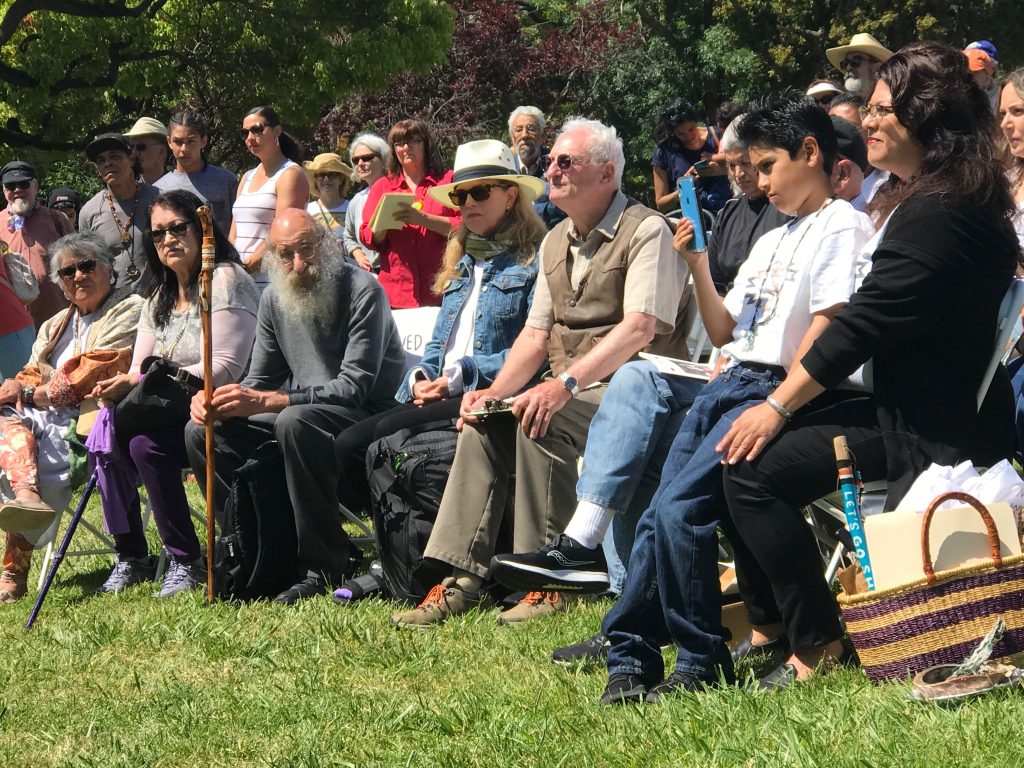
Artist Jean LaMarr, author Malcom Margolin, California Arts Council executive director Anne Bown-Crawford, FOOP’s Stephen Most, and Monica Arrellano, Vice chair of the Muwekma Ohlone Tribal Council, listen to Mayor Jesse Arreguin at the Ohlone Mural Rededication Ceremony. (Photo by M.Ewell)
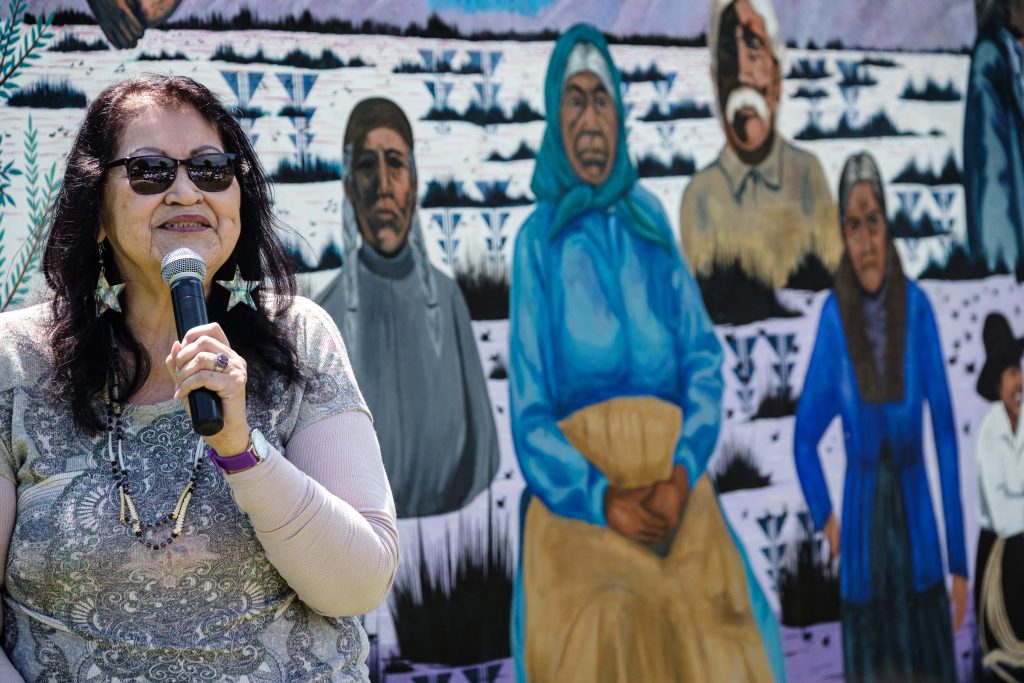
Artist Jean LaMarr speaks about creating the Ohlone Mural at the rededication ceremony.(Photo by Pete Rosos)
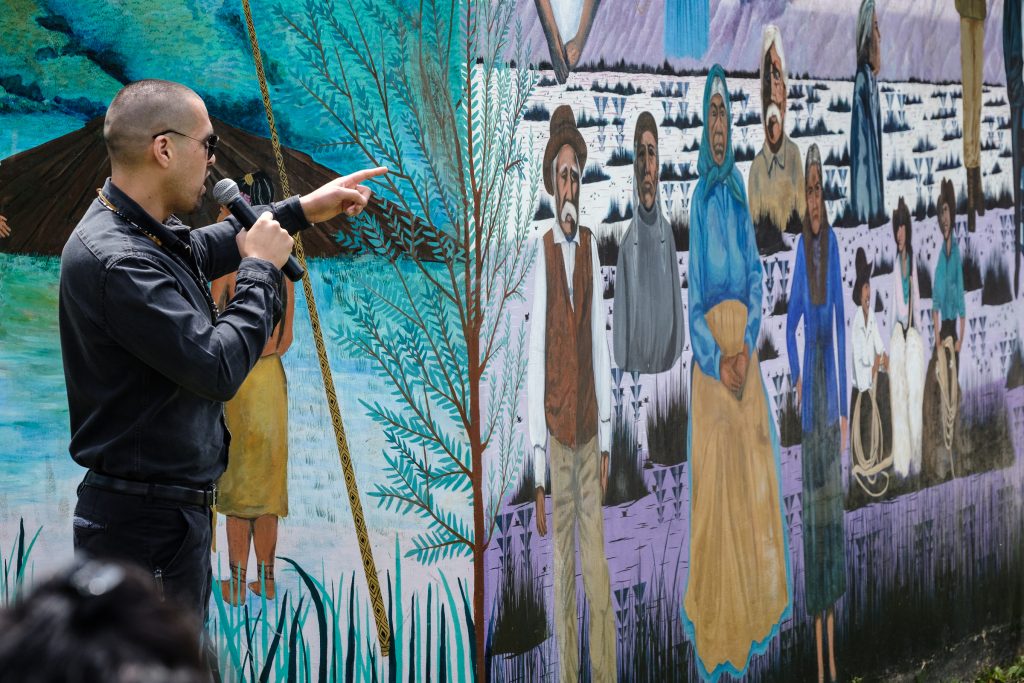
Vincent Medina speaks about seeing the Ohlone Mural for the first time with his grandmother and the way the mural affirmed his identity as a Native of the East Bay. (Photo by Pete Rosos)
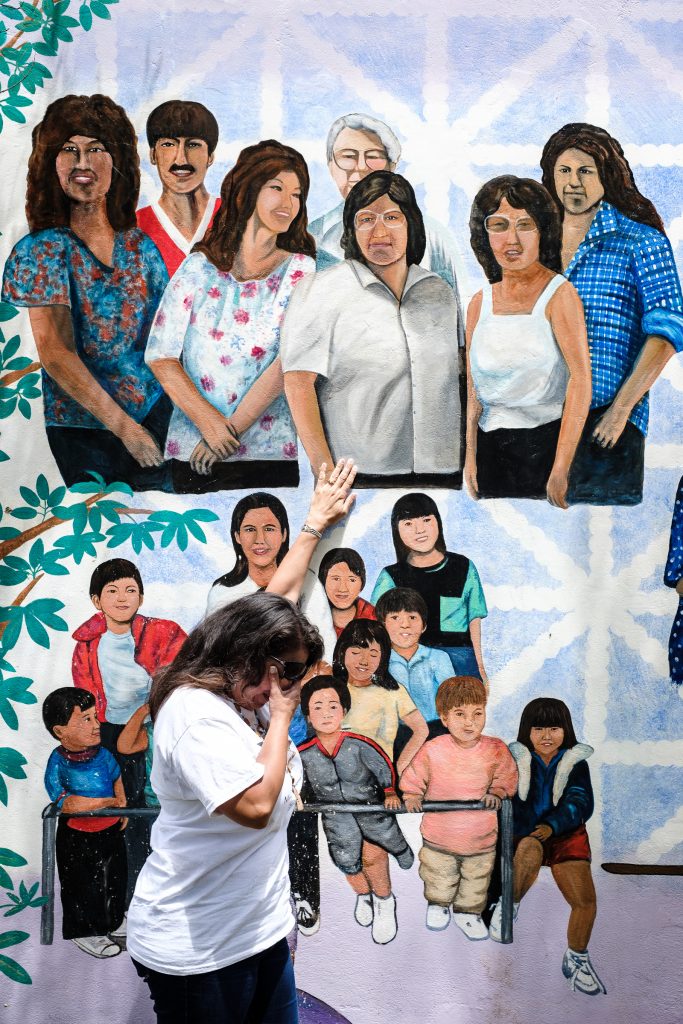
An Ohlone woman comes to tears at seeing the rendering of a recently deceased family member’s image on the south facing mural at Ohlone Park. (Photo by Pete Rosos)
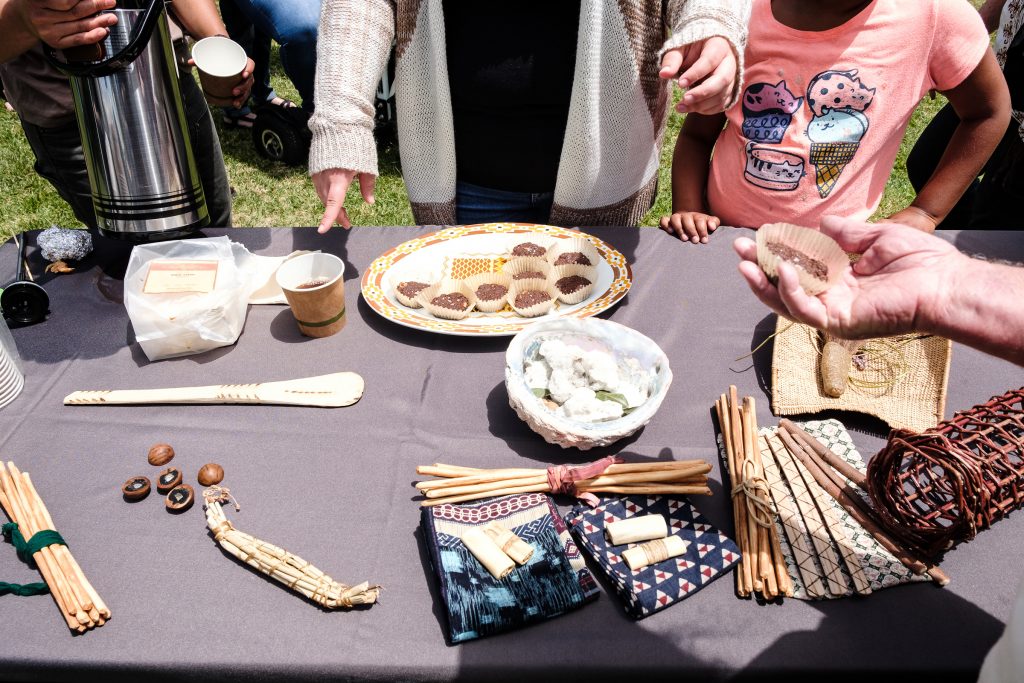
Acorn flour brownies and rosehip tea courtesy of Ohlone Cafe (Photo by Pete Rosos)
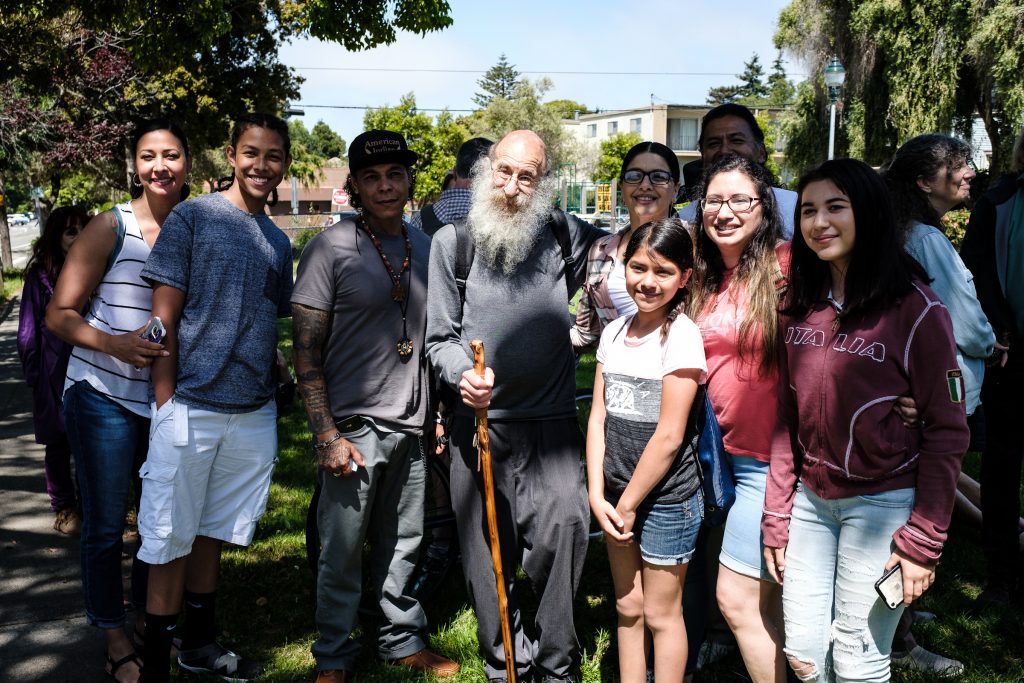
Members of the Muwekma Ohlone Tribe pose with Malcolm Margolin, author of The Ohlone Way. (Photo by Pete Rosos)
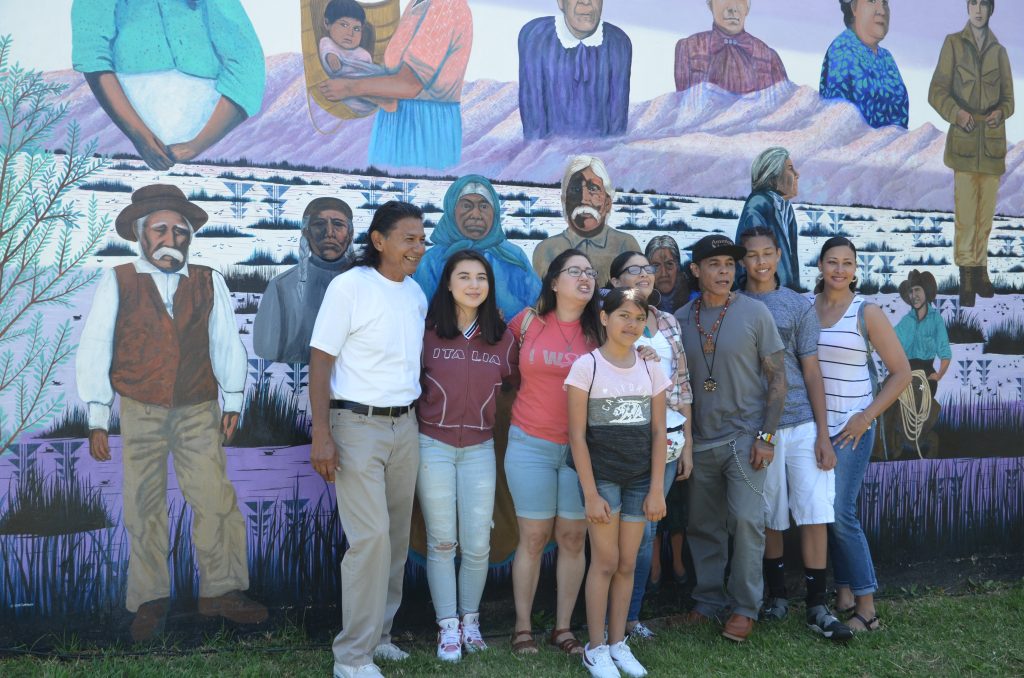
Young members of the Muwekma Ohlone Tribe pose in front of the panel on the Ohlone Mural that depicts their ancestors (Photo by W. Newton)
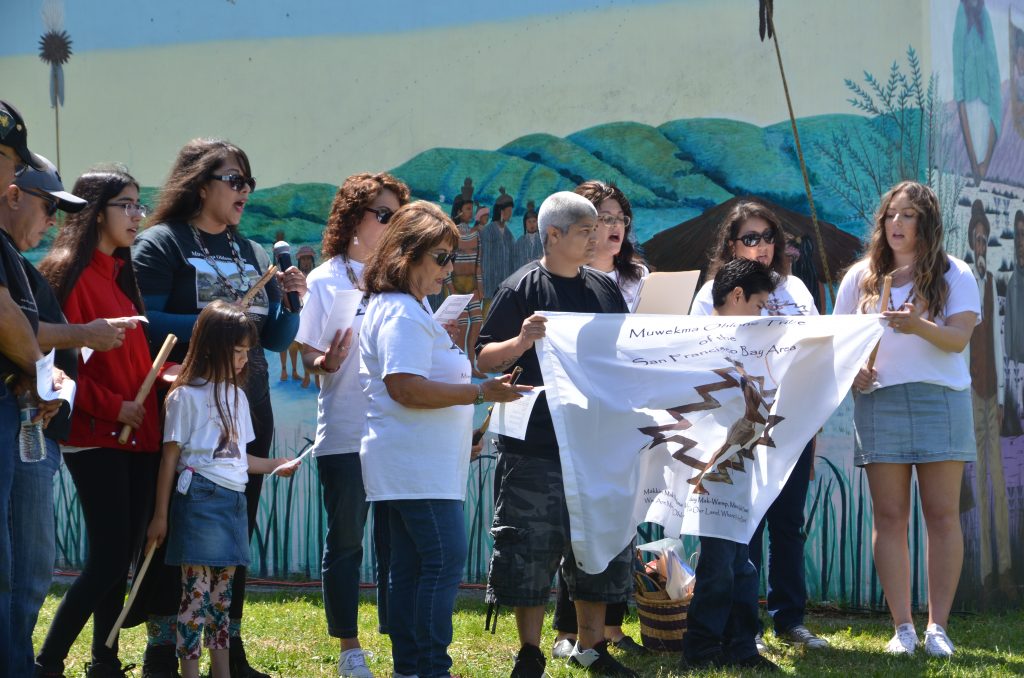
Members of the Muwekma Ohlone Tribe unfurl their flag in front of the north panel of the Ohlone Mural. (Photo by W. Newton)

Berkeley Mayor Jesse Arreguin and former City Councilmember Linda Maio at the rededication of the Ohlone Mural. (Photo by M. Ewell)
-•-|-•-
The History Pavilion
The History Pavilion at the 50th Anniversary hosted a dozen participants who related the origins of Ohlone Park as the People’s Park Annex in 1969. In late 1967 BART abandoned land after they demolished 200 homes and trenched the area to submerge the tube the trains. After the suppression of People’s Park, neighbors and allies from all over the area began creating a park on what was called The Hearst Strip. Their early efforts were trashed by police, but residents persisted and after a ten year effort the California Assembly passed Tom Bates’ law that provided the City of Berkeley the means to purchase the land from BART and create Ohlone Park in 1979. (Research assistance on the history of Ohlone Park was provided by the Berkeley Historical Society and the Berkeley Public Library History Room.)
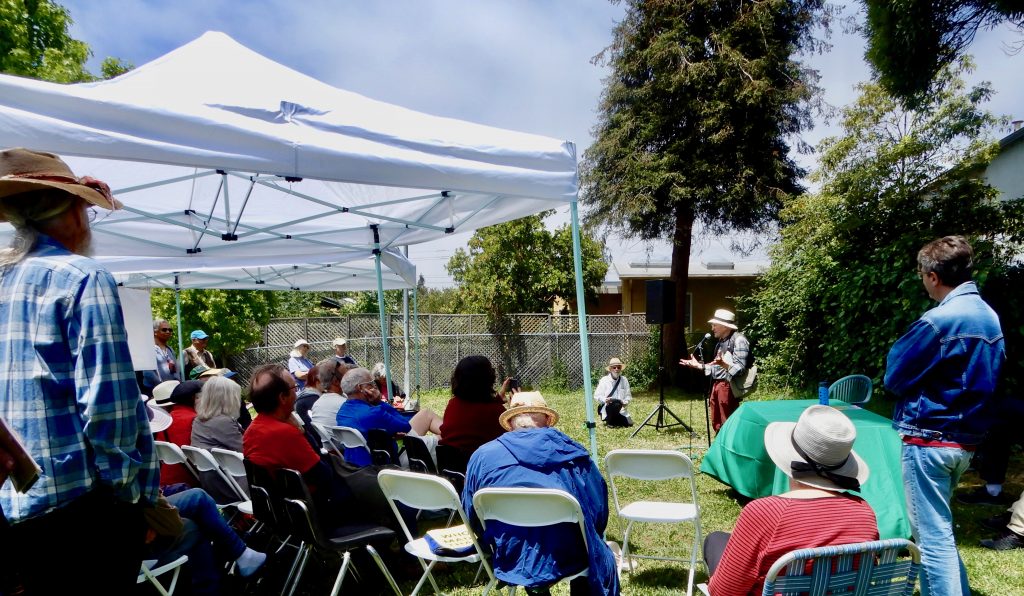
Robert Hurwitt speaks to the decade-long determination of the neighbors to establish Ohlone Park. (Photo by W.Newton)
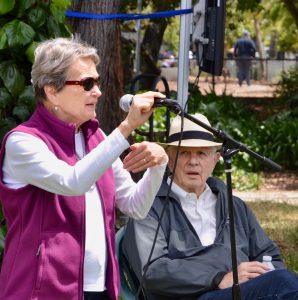
Former CA Assembly Member Loni Hancock retold her early efforts to support the creation of the park. Former Berkeley Mayor Bates looks on. (Photo by W.Newton)

Chuck Wollenberg, History Professor Emeritus Berkeley CIty College provided background on BART’s plans for rapid transit in the SF Bay area (Photo by W. Newton)

People’s Architecture banners (Photo by W. Newton)
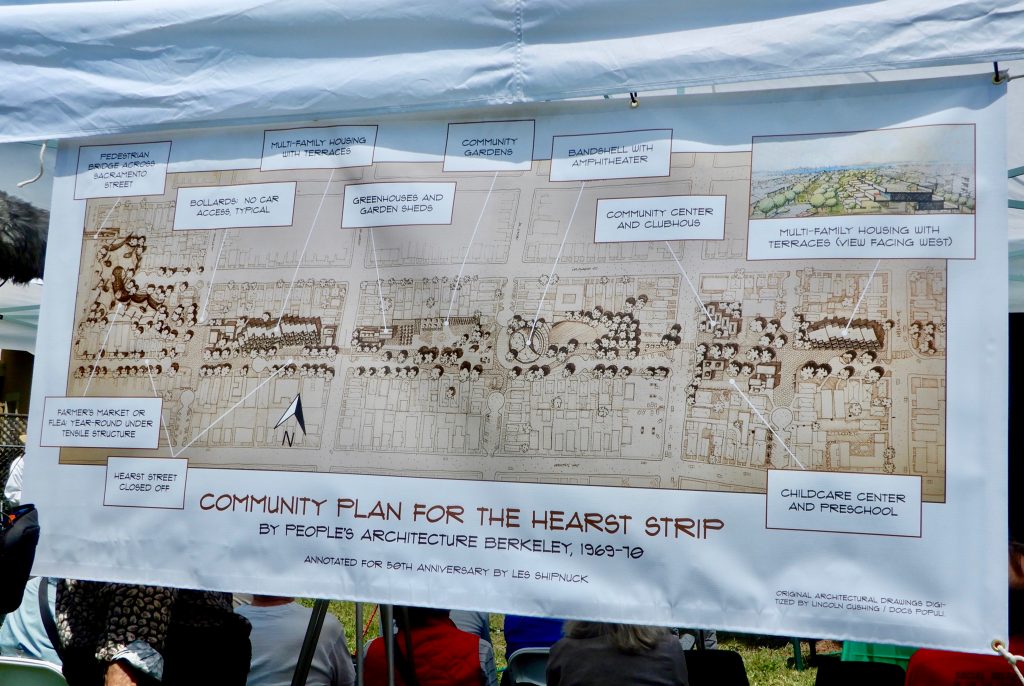
Close up of People’s Architecture design for the “Hearst Strip” in 1969. Originals provided by Les Shipnuck. (Photo by B. Marszalek)
Rare film coverage of 1969 events in Berkeley
This personal video, taken during the turmoil in 1969, was specially digitized for the 50th Anniversary and viewed at the History Pavilion. A World Premier! Scroll down to “Ohlone Park at the link. http://www.berkeleyinternet.com/
-•-|-•-
The Ohlone Park Community Garden, like the Ohlone Dog Park, is maintained by a dedicated band of volunteers.
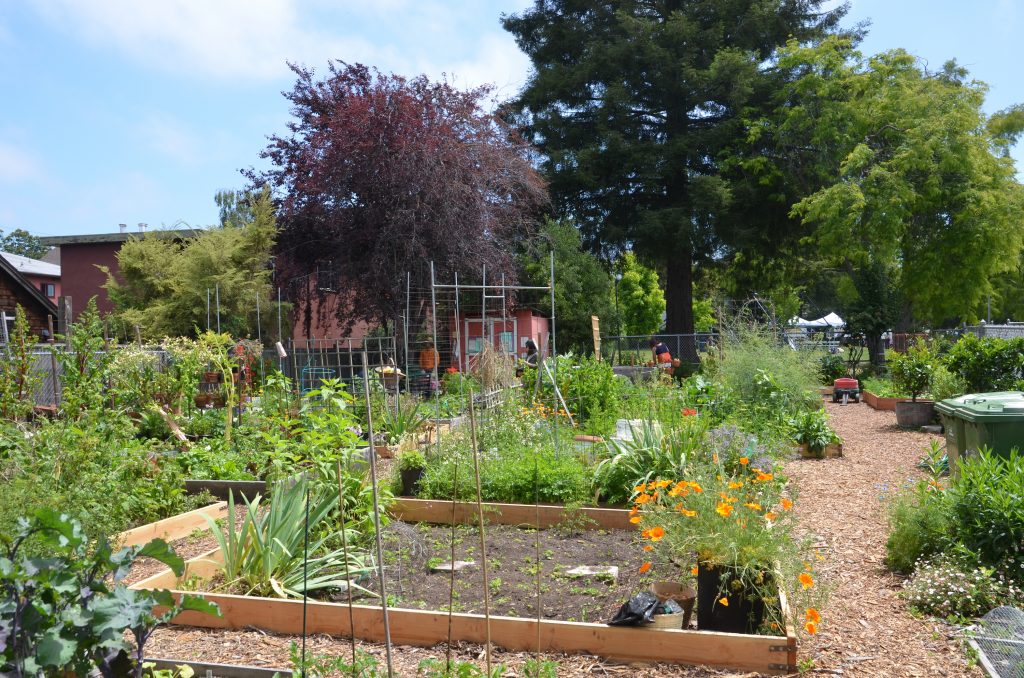
The Ohlone Community Garden featured an “Open House” during the celebration (Photo by W.Newton)
-•-|-•-
Native California Indian Arts and Culture Festival
The California Institute for Community, Art, and Nature joined the Alliance for California Traditional Arts in bringing to Ohlone Park on its 50th anniversary the best and most accomplished artists, basket weavers, jewelry makers, boat builders, storytellers, singers, and other traditional artists from many parts of Native California.
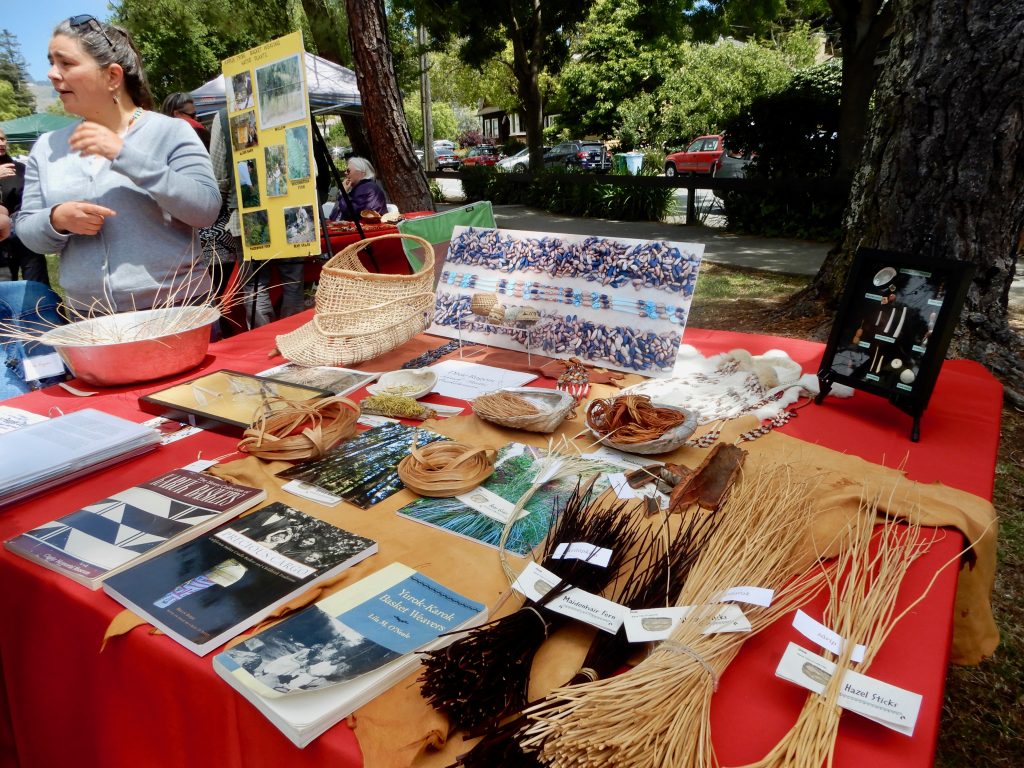
Basketry was one of many California Indian arts displayed at the Native California Arts and Culture Festival in Ohlone Park on its 50th anniversary (Photo by A. Bancon)
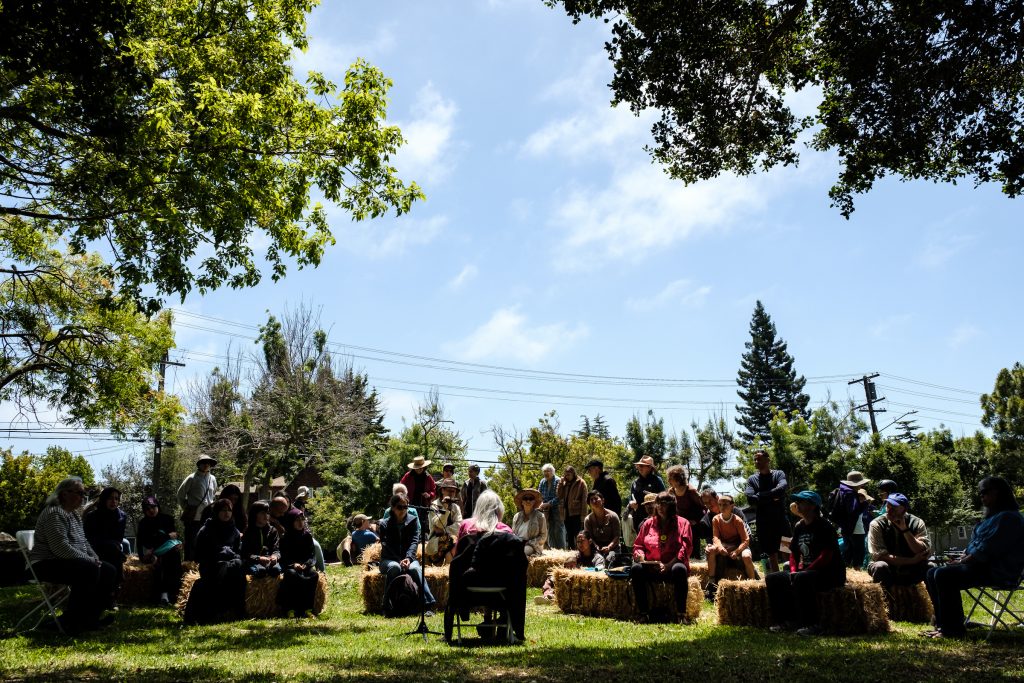
Renowned Coast Miwok & Kashaya Pomo basket weaver Julia Parker tells stories about how she learned and lives her craft. Julia is a National Endowment of the Arts recipient of the National Heritage Fellowship (Photo by Pete Rosos)
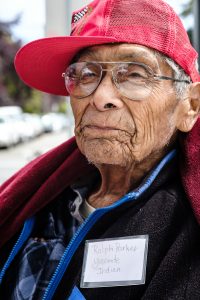
Ralph Parker is the only living descendant of the Southern Sierra Miwok whose homeland is Yosemite Valley.(Photo by Pete Rosos)
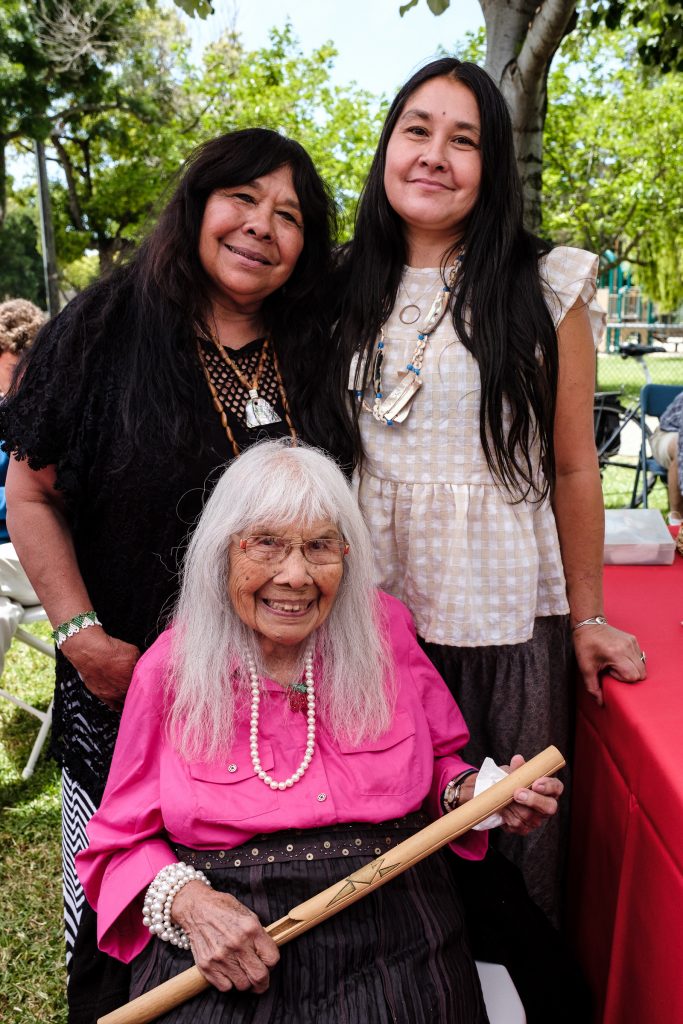
Three Generations of California Natives. Lisa Parker, Ursula Jones, and Julia Parker (Clockwise from the upper left ). (Photo by Pete Rosos)
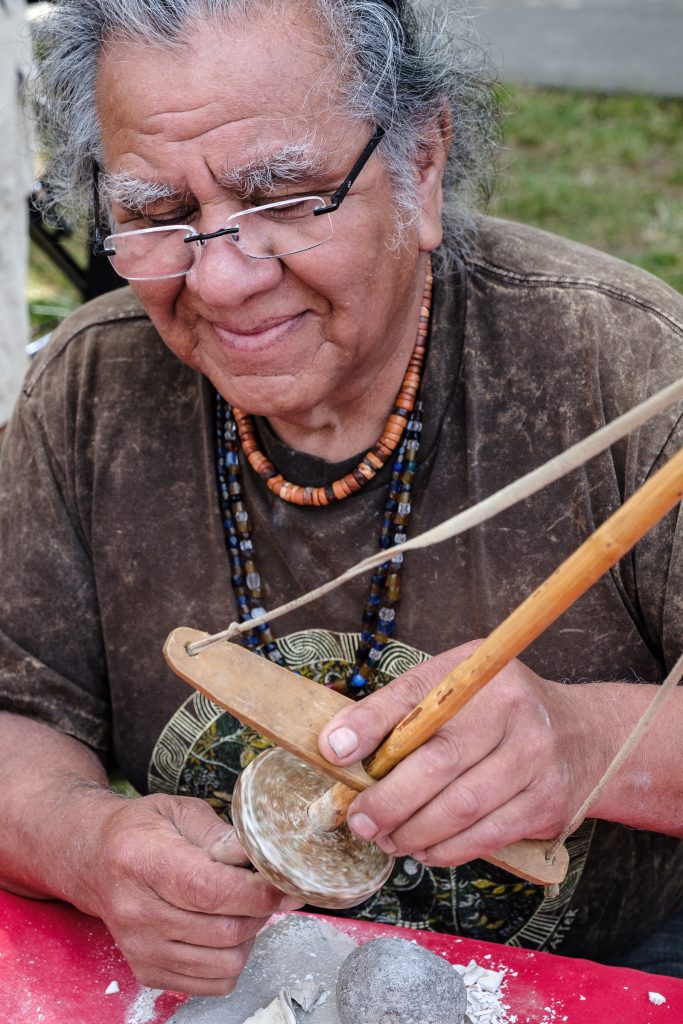
Fred Velasquez demonstrates the use of hand drill to make his jewelry. (Photo by Pete Rosos)
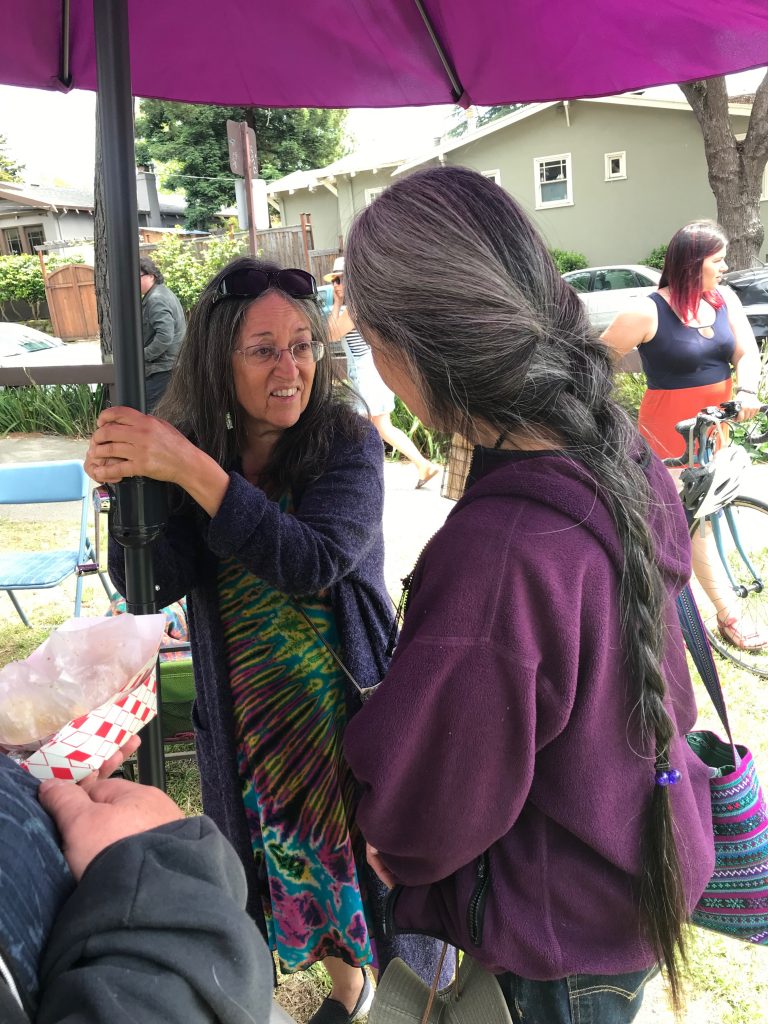
Master Ohlone basketmaker Linda Yamane speaks with a visitor at her exhibit. (Photo by M.Ewell)
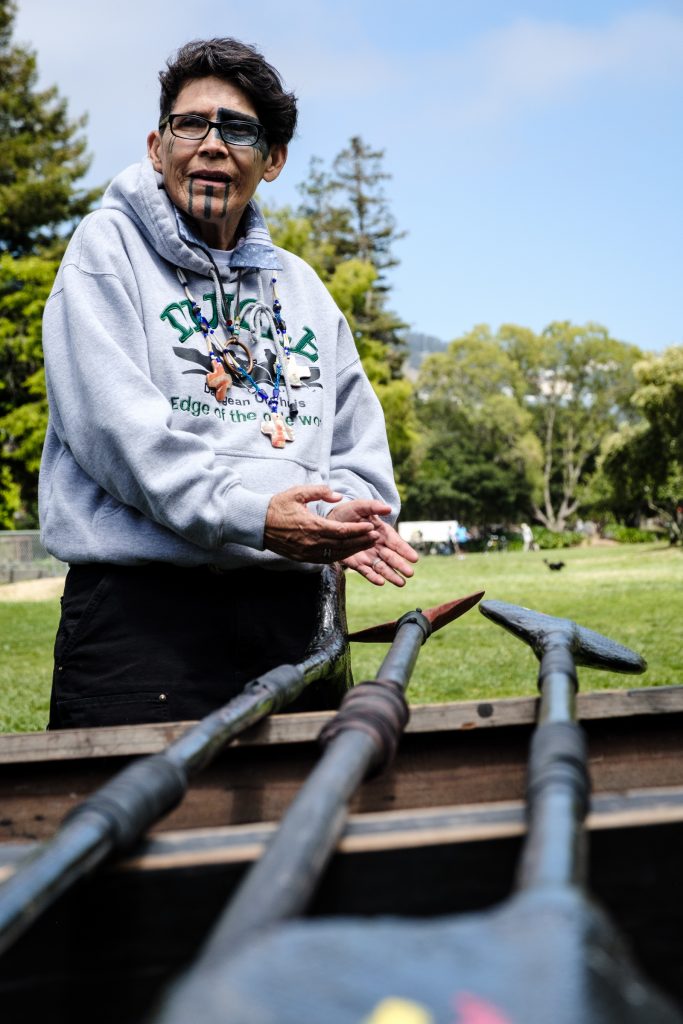
L. Frank Manriquez is a Tongva-Ajachmen artist, writer, basket weaver and native language scholar who brought a Ti’aat(canoe). Her tribe is from the area now known as San Diego and Orange County. (Photo by Pete Rosos)
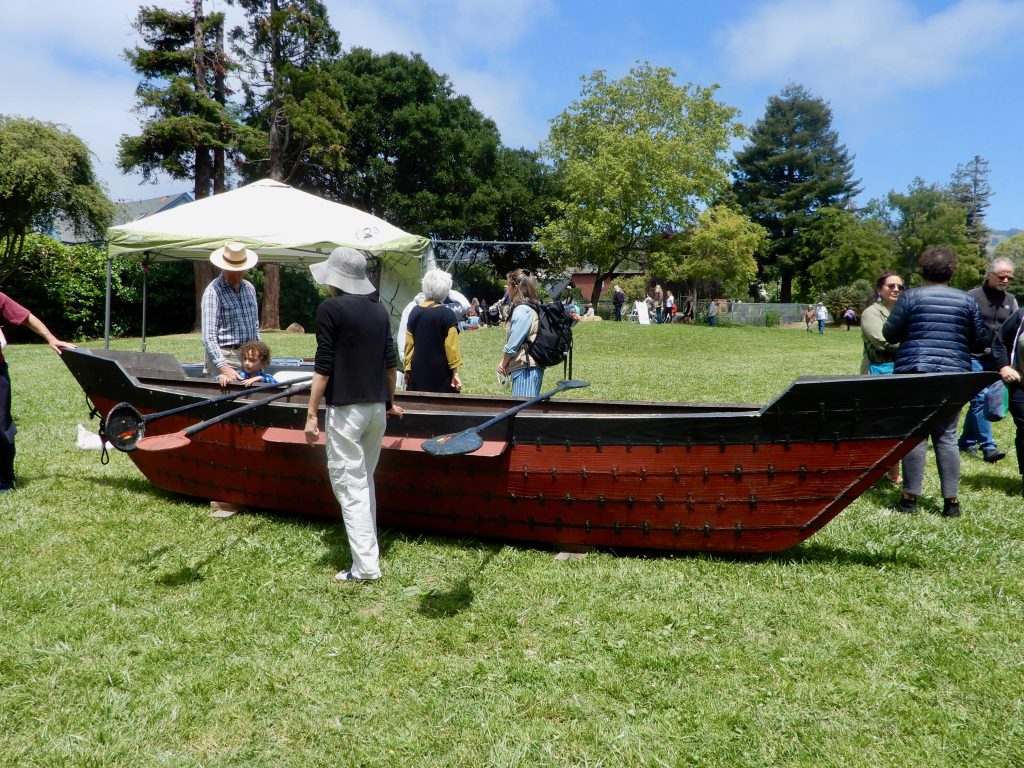
Full view of the canoe (Photo by A.Bancon)
A fun day for all
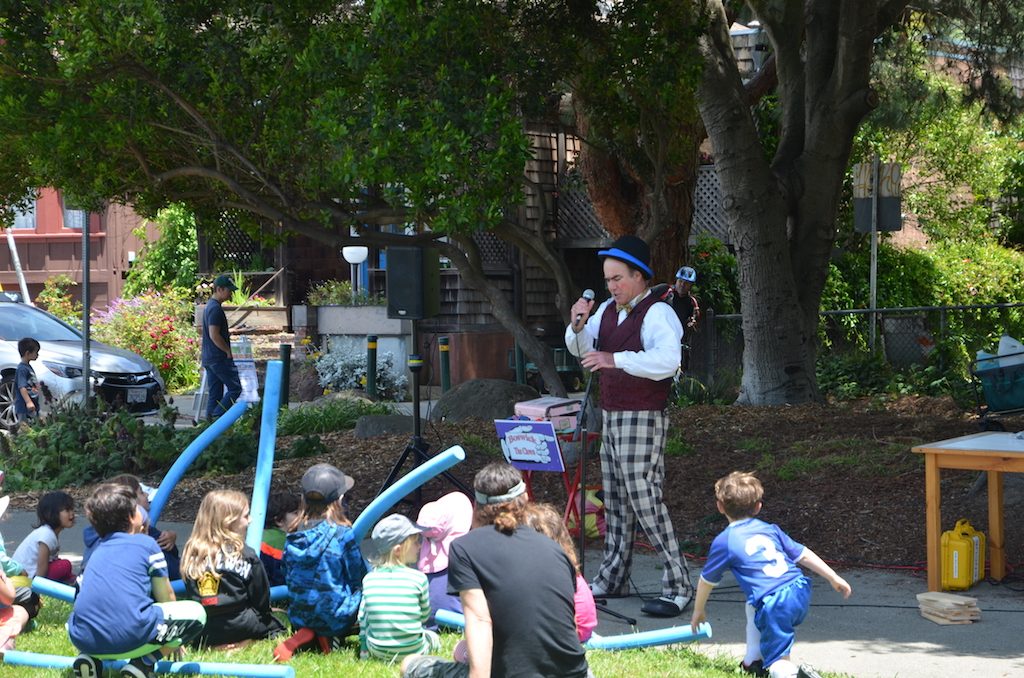
Boswick the Clown entertains a rapt audience (Photo by W. Newton)
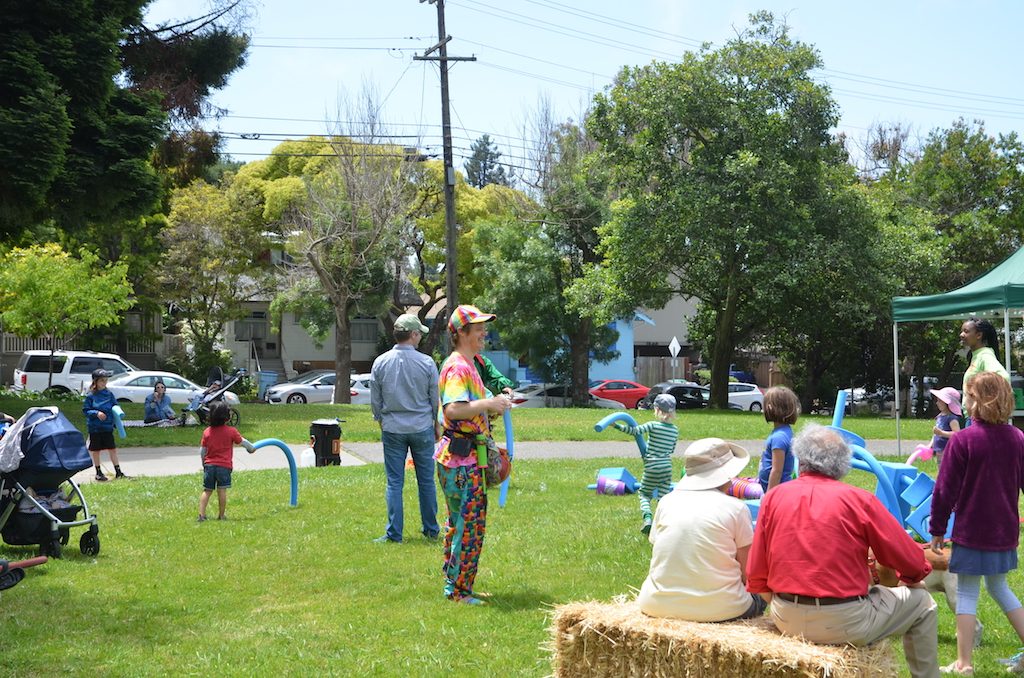
A neighbor of Ohlone Park, Jeremy the Juggler performs (Photo by W. Newton)
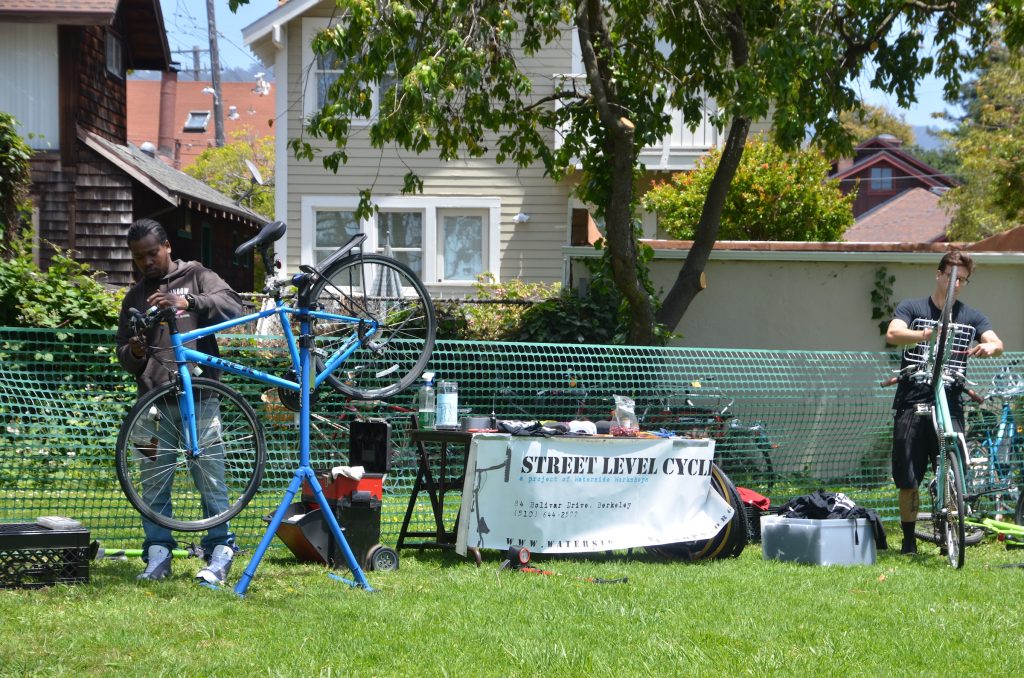
Street Level Cycles performs bike-tune-ups
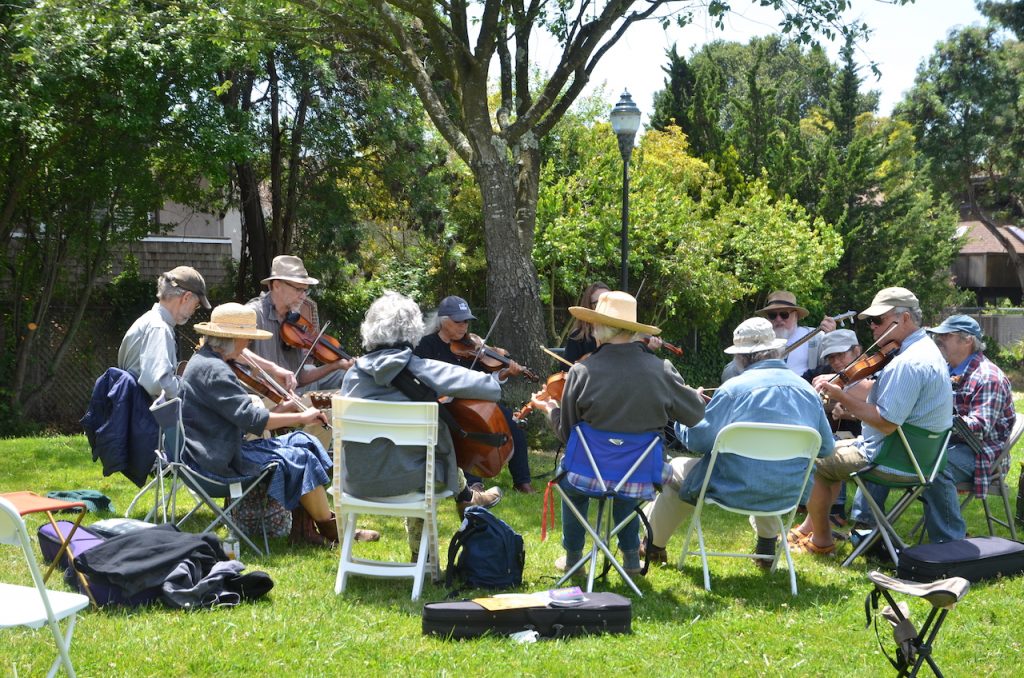
An old-time acoustic music jam played all afternoon at the 50th anniversary. (Photo by W. Newton)
Archival Film Coverage of People’s Park Annex (1969)
Recently discovered short clip of 8mm film of the early occupation of the Hearst Strip showing National Guard assembling along Hearst Avenue. And a longer segment depicting scenes from Peoples Park and PPA with DIY kids play equipment, parties and plantings. Fuller documentation of the scenes is underway and will be posted when complete.
• • •
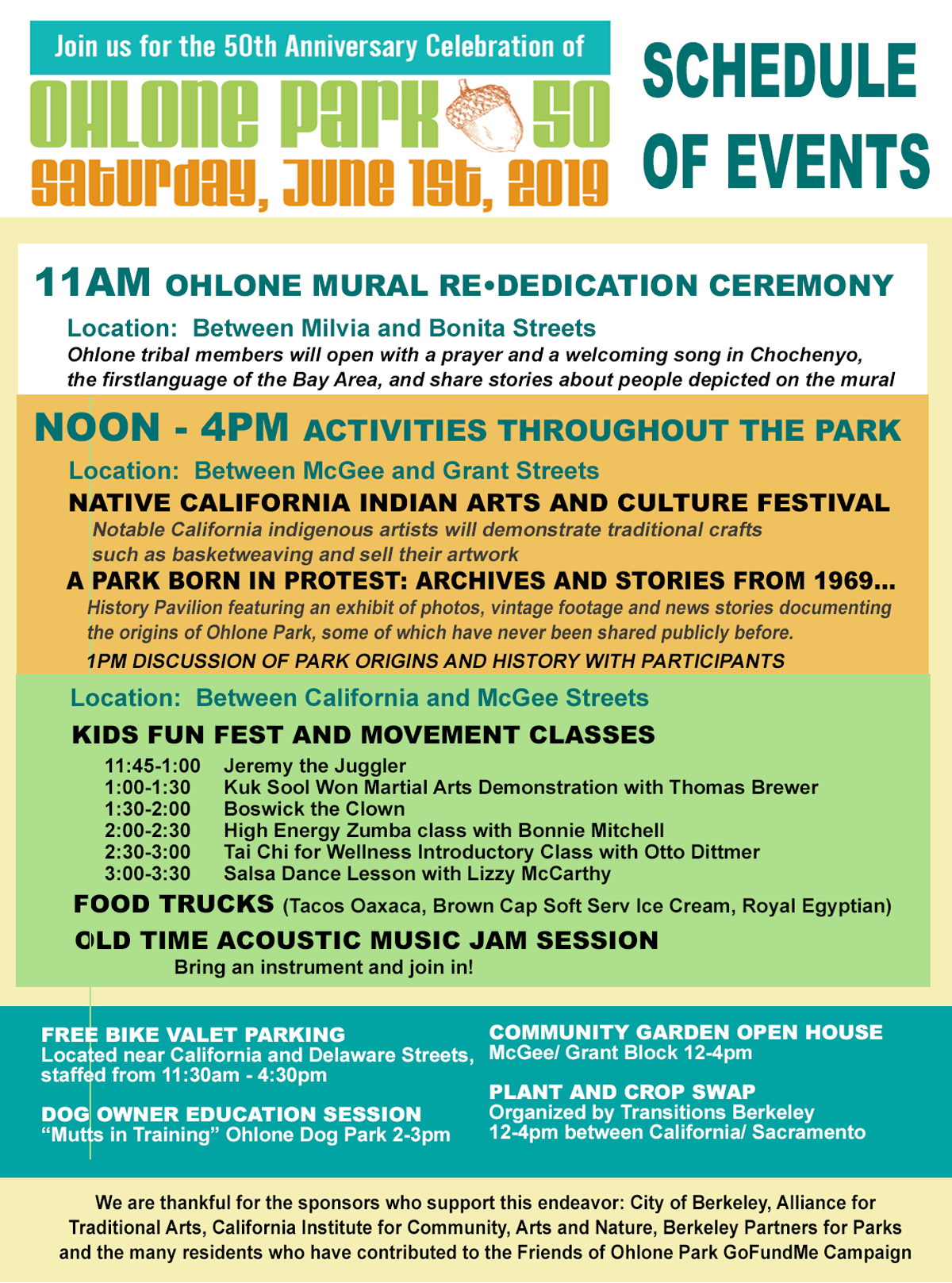
• • •

Kite flying near the Jungle Gym built in 1969 and removed in 2018 by Parks Department (Photo by W. Newton – August, 2016)
In 1969 a group of neighbors occupied the strip of land along Hearst that BART filled in after digging a tunnel for the new rapid transit system. They planted trees, built a series of DIY play structures (like the one pictured above), and cultivated gardens.
Volunteer parties on weekends and sometimes during the week brought out dozens of neighbors. Often music and food tempted many more to visit and enjoy the merriment.
